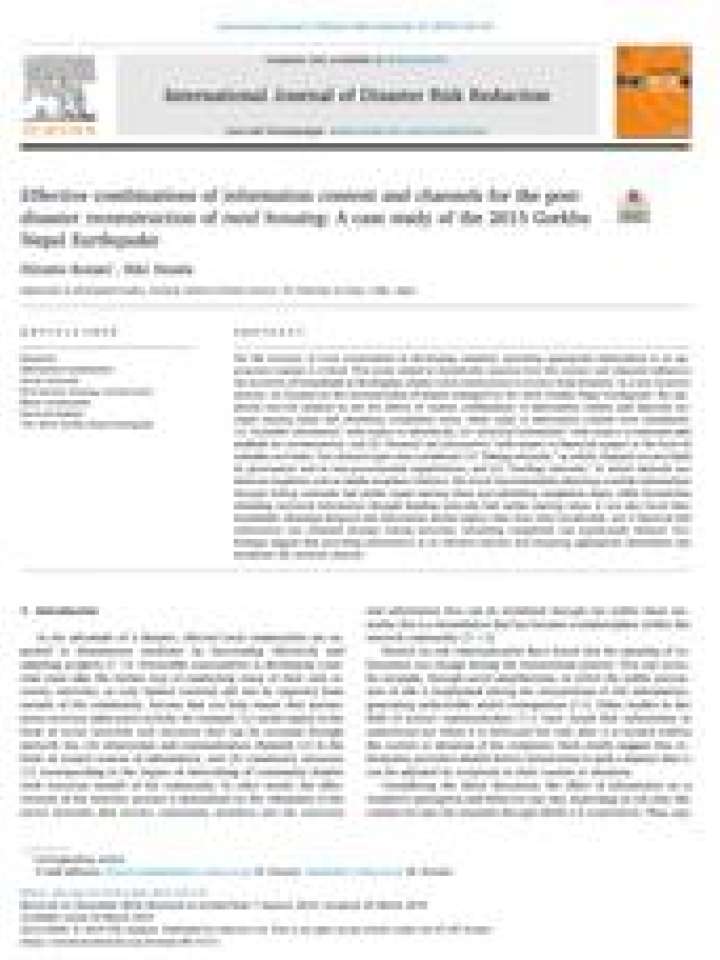Effective combinations of information content and channels for the post-disaster reconstruction of rural housing: A case study of the 2015 Gorkha Nepal Earthquake
For the recovery of rural communities in developing countries, providing appropriate information in an appropriate manner is critical. This study aimed to statistically examine how the content and channels influence the activities of households in developing country rural communities to recover from disasters. As a key recovery activity, we focused on the reconstruction of houses damaged by the 2015 Gorkha Nepal Earthquake. We employed survival analysis to test the effects of various combinations of information content and channels on: repair starting times and rebuilding completion times.
Three types of information content were considered:
- “scientific information” with respect to aftershocks,
- “technical information” with respect to materials and methods for reconstruction
- “financial aid information” with respect to financial support in the form of subsidies and loans.
Two channel types were considered:
- “linking networks,” in which, channels are provided by government and/or non-governmental organizations
- “bonding networks,” in which channels are between neighbors and/or family members/relatives.
We found that households obtaining scientific information through linking networks had earlier repair starting times and rebuilding completion times, while households obtaining technical information through bonding networks had earlier starting times.
It was also found that households obtaining financial aid information started repairs later than other households, and if financial aid information was obtained through linking networks, rebuilding completion was significantly delayed. Our findings suggest that providing information in an effective manner and designing appropriate institutions can accelerate the recovery process.
